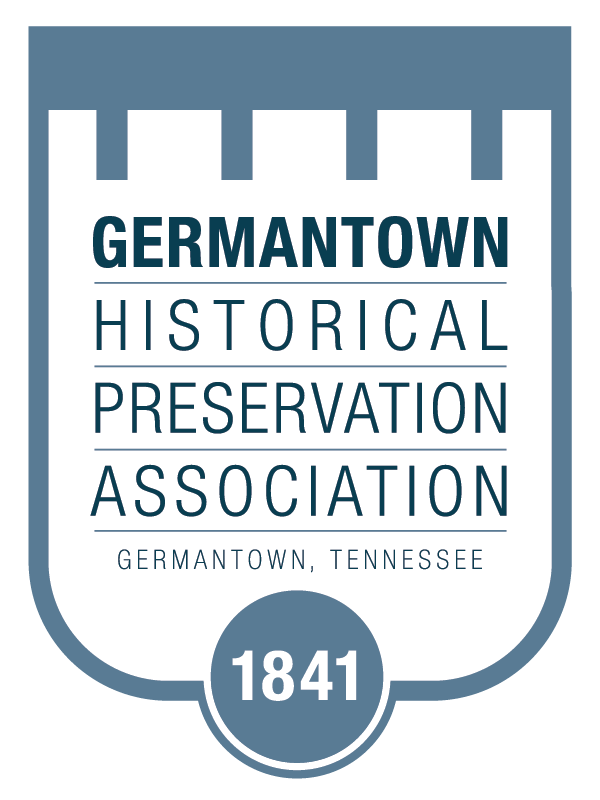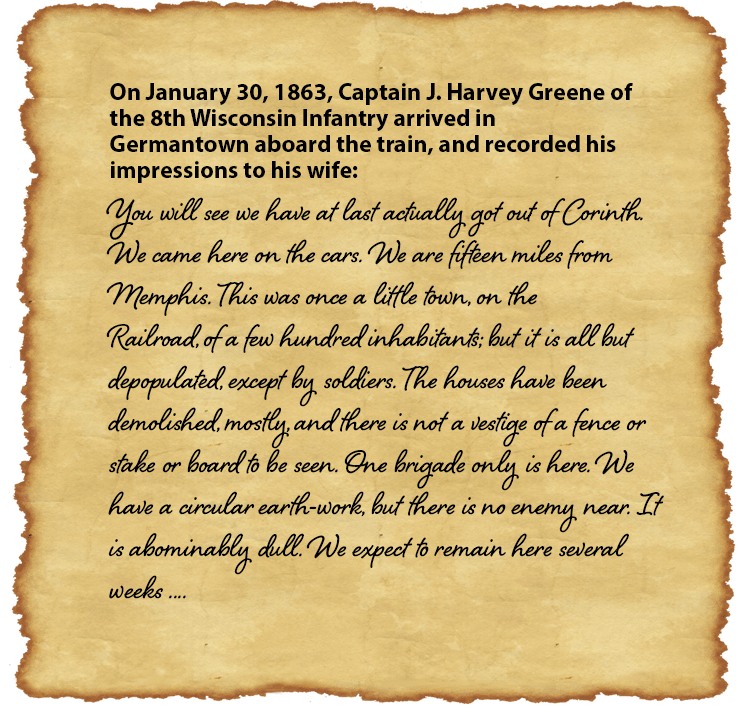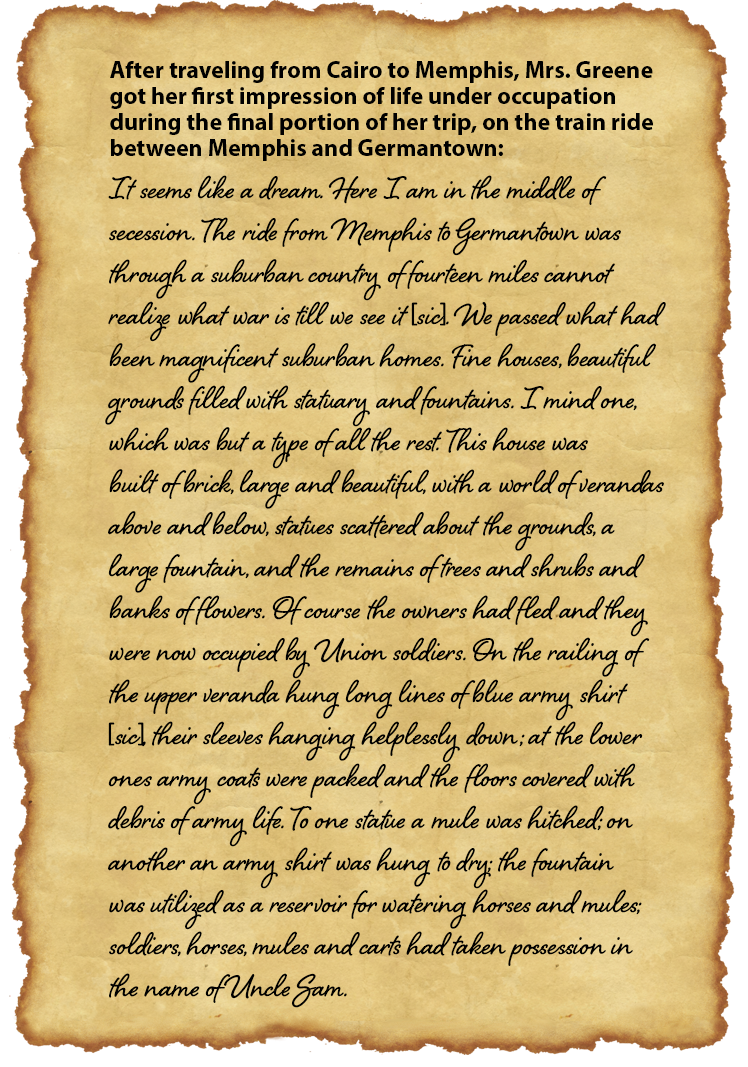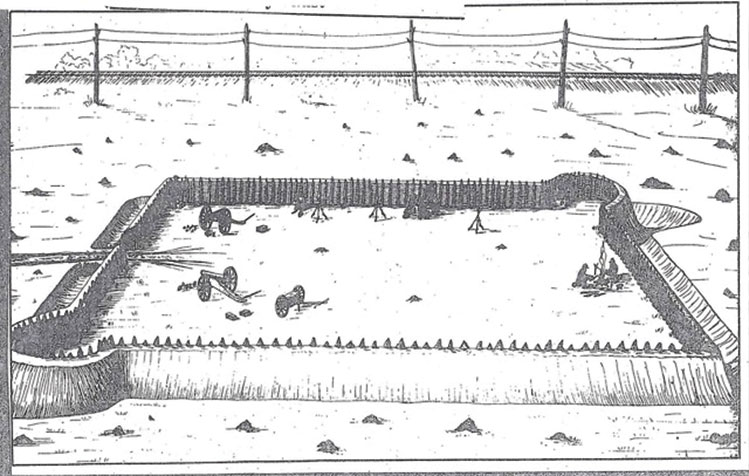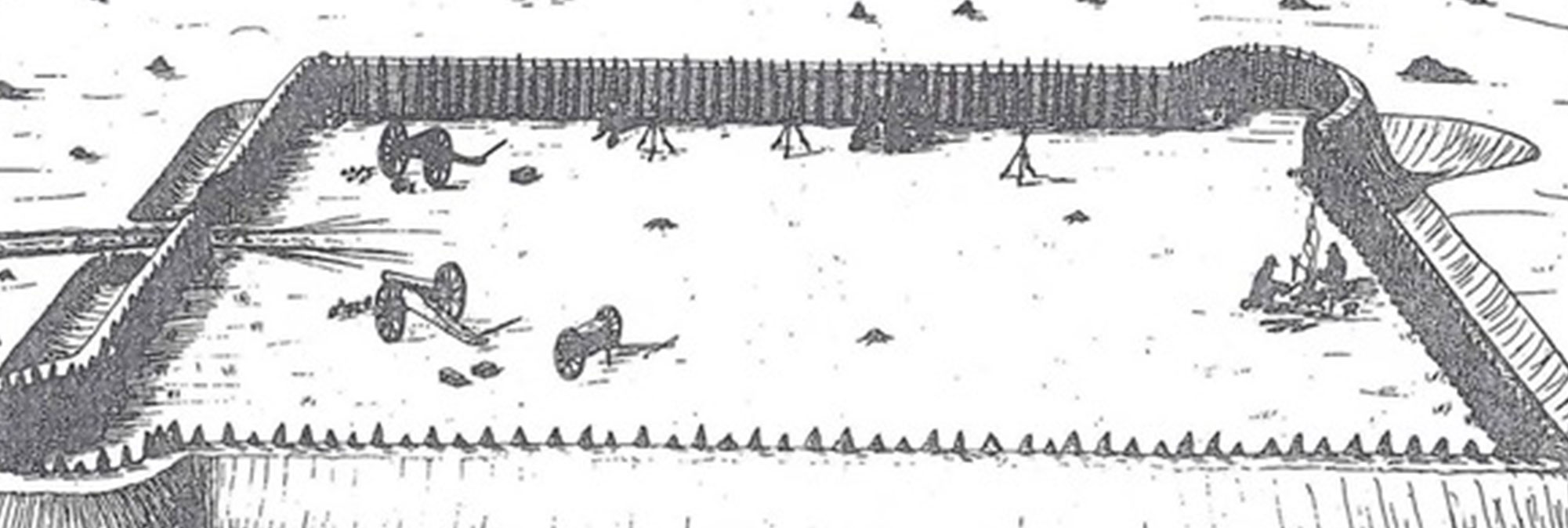
1863
By Lee Millar
| January | The remaining public buildings, mills, and stores of Germantown are ordered burned to deny their use by Southern sympathizers and in retaliation for Confederate raids. Presbyterian Church is also ordered burned, but the pastor Rev Evans pleaded with the Union Colonel William Sanderson, a fellow Mason, to spare the church, and it was not burned. The regular occupation of Germantown begins. Six regiments and artillery camp in and around the town: 56 Ill Inf, 17th Iowa Inf, 10th Mo. Inf, 80th Ohio Inf at Forest Hill, Springfield (Ill) Light Artillery Battery, 7th Kansas Cavalry.
A redoubt (earth fort) is built east of Germantown to guard the Memphis & Charleston Railroad. [This ‘fort’, known as Fort Germantown, still remains today at the south end of Honey Tree Road.] |
| January 12 | CS cavalry removes some crossties at the Hacks Cross Road railroad curve and derails a Union train. Two boxcars are wrecked, but the cavalry withdraws. |
| January 27 | Engagement near Germantown between CS and US cavalry. |
| January 28 | Skirmish south of Collierville involving the US 7th Kansas Cavalry out of Germantown. US cavalry was driven back into town. |
| March | “Fort Germantown”, an earthen redoubt, is constructed by the 49th Illinois Infantry. One section, 2 guns, of artillery is stationed in the fort. The 12th Indiana Infantry and 9th Illinois Cavalry were temporarily here. |
| May 23 | Skirmish at Germantown |
| June 3 |
Union troops all along the Memphis & Charleston RR are ordered to build fortifications for the protection of bridges and trestles on the line. The Union army begins the recruitment of ex-slaves into the army. Part of Company I, 1st West Tennessee Infantry Regiment of African Decent enrolled at Germantown. This regiment was later renamed the 59th US Colored Infantry. Later in the month a second company was formed and added to the 2nd West Tennessee Inf (A.D.), which became the 2nd U.S. Tennessee Volunteers (A.D.), and later the 61st US Colored Inf. Part of the 3rd Cavalry Brigade camp locates in Germantown on the “old Nashoba Tract one mile north of the railroad and one-fourth of a mile south of the Wolf River.” |
| July 8 | A scouting expedition launched from Germantown to search for CS cavalry |
| July 16-20 | Patrol sent out from Germantown |
| July 18 | Skirmish at Germantown |
| October 11 | Battle of Collierville; raid conducted on Germantown |
| October 29 | Fort Germantown is abandoned, and the stockade portion is burned. Most Federal troops move east to rescue the Union army surrounded at Chattanooga, TN. Confederates briefly occupy the old Fort, then depart south. |
| November 3 |
The second battle of Collierville; US Col. Hatch counterattacks from Germantown. The devastation to the area in and around Germantown was well documented by Fletcher Pomeroy of the 7th Kansas Cavalry. The 7th Kansas wintered in Germantown for three and a half months in 1863. In Pomeroy’s “War Diary” he describes the duties and living conditions while living in Germantown and also the conditions of the area in general. While stationed in their winter camp across from present-day Germantown High School they were not idle. Pomeroy states they “made themselves as comfortable as possible by stockading the tents and building stables for the horses. Other duties were the care of the horses, a little drill and every day some part of the regiment was out on scout because of the bands of Confederate cavalry prowling about. The roads were knee-deep in mud or snow. The men had to sleep in wet clothes, on ground saturated with moisture, with but a single blanket for cover and the available wood was too green to burn.” Pomeroy made the comment “on the whole it was difficult soldiering.” |
| Nov – Dec | Forrest’s raid into W. Tennessee culminates in a small attack on Collierville; Germantown forces placed on alert. |
